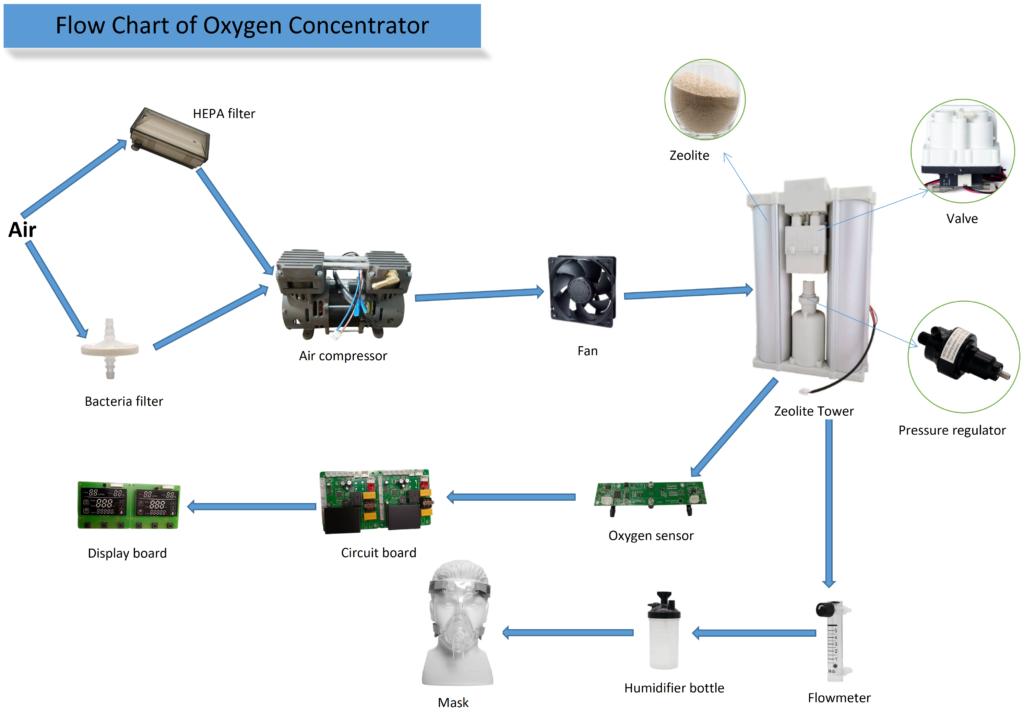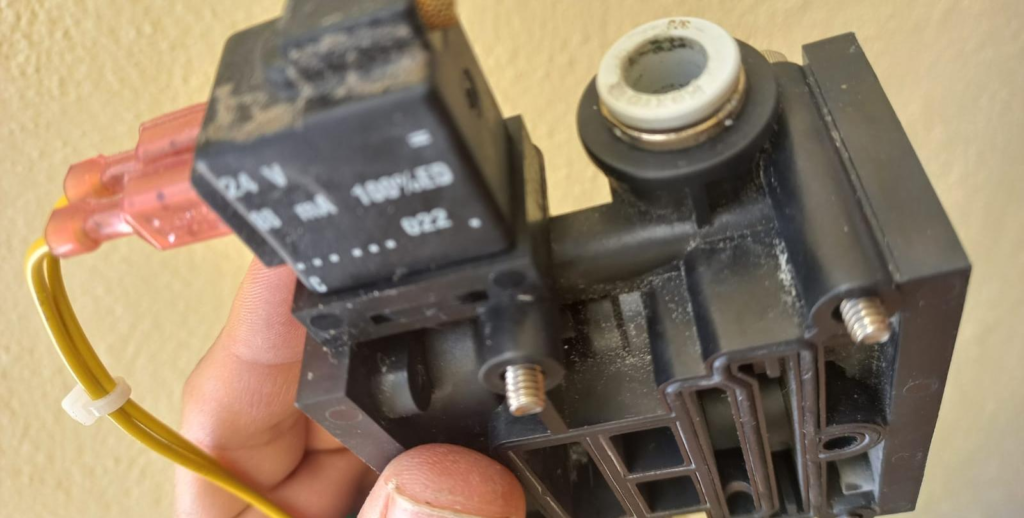With the ravages of Covid-19 in the last two years, the oxygen concentrator has become an essential part of human health care. Understanding the internal structure of the oxygen concentrator is more conducive to the daily maintenance of the oxygen concentrator, thus increasing the working life of the oxygen concentrator.
A common home oxygen concentrator consists of the following components:
- Filters
- Compressor
- Cold fans
- Zeolite tower (Molecular sieve tower)
- Circuit boards
- Display boards
- Flow Meter
- Humidifier bottles

- First, the air in the atmosphere enters the Air compressor through the filters.
- The piston in the compressor will pressurize the incoming air and send it to the four-way solenoid valve. And this pressurized air releases heat, therefore, in order to cool it, a cooling fan is necessary.
- Pressurized air through the valve enters one of the screens, the sieve bed is made of zeolite and allows air to pass through it.
- The pressure in the screen bed was analyzed by the Circuit board, when a certain pressure is reached, the Circuit board allows the four-way valve (solenoid valve) to change the direction of the airflow. Now the air is filtered through another sieve bed. In the process, another sieve bed will be desorption, and gases such as nitrogen and water vapor will be released back into the atmosphere. The oxygen concentrator needs two sieve beds so that they can continue to supply oxygen.
- The high purity oxygen will accumulate in the accumulator tank. The tank consists of a surface pressure net and a pressure sensor.
- The pressure sensor is used for safety purposes, when the oxygen tank is full, the Air compressor stops working.
- The oxygen passes through the Circuit board to check its purity.
- Most of the oxygen is pumped out through a Flowmeter, which helps regulate the amount of oxygen pumped out, then the oxygen pumps to high-purity out through a humidifier to keep the patient supplied with oxygen.




